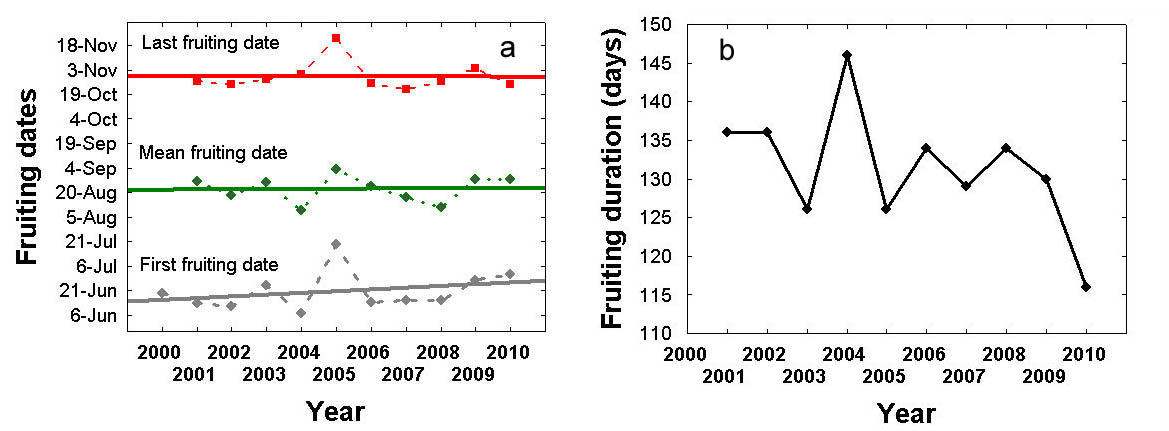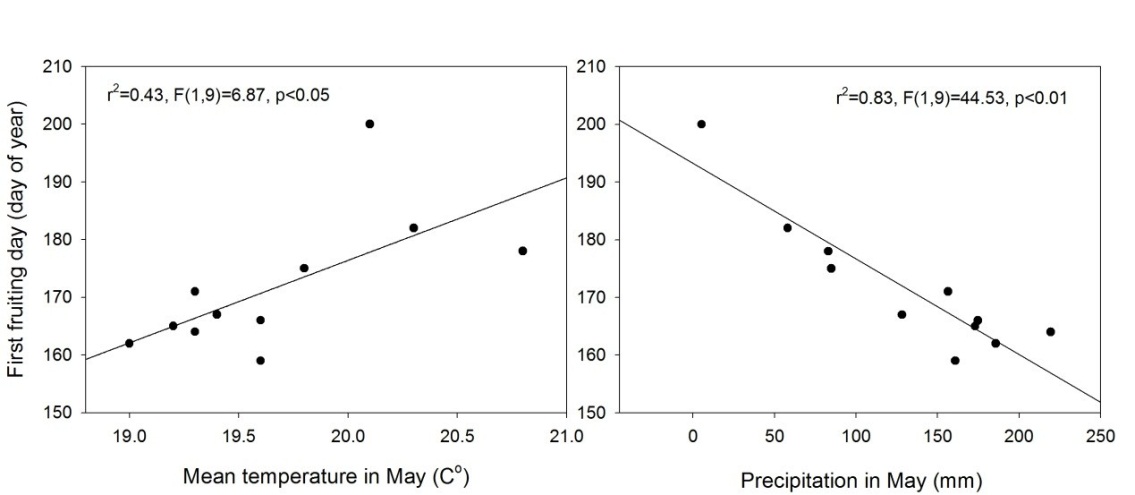Matsutake mushrooms (Tricholoma matsutake) are highly prized, seasonal gourmet items for the Japanese market. Yunnan Province contributes nearly 1/3 of the total matsutake production sold in Japan with an annual benefit of more than 40 million US dollars. In the communities harvesting matsutake in Yunnan, household income generated from matsutake can be up to 80%. However, there is an observed trend of declining productivity in certain areas; the driving causes are unclear, but mainly perceived by the public as over harvesting, and climate fluctuation.
In order to test how much climate change influences matsutake mushroom, we established a one hectare observation plot in Baoshan City in western Yunnan where the human impact on harvesting was controlled. Monitoring activity started from 2000 with joint efforts from a local villager.
Data collected during 2000-2010 suggested that matsutake fruiting occurred later in the season. Analyzing this changing fruiting pattern against meteorological variables using Projection to Latent Structure regression, we found that this observed later fruiting is most likely explained by rising temperature and reduced rain during May and June. High temperature and abundant rain in August resulted in good productivity. Our results contribute to a general model of fungal ecology, which can be used to predict the responses of fungi to global climate change. It also has wide implications for resource management. Result have been published online in Fungal Diversity (http://www.springerlink.com/content/42uv554077265645/).
This study was sponsored jointly by the National Natural Science Foundation of China (Grant No. 30800158), the 11th Five-Year China Key Science & Technology Project on Silviculture for Carbon Sequestration in Subtropics (Grant No: 2008BAD95B09) and the Ford Foundation (Grant No. 10850639).
Tricholoma matsutake (Image by KIB)
Variations and trends in fruiting dates (a) and duration(b). (Image by KIB)
The relationships between temperature and precipitation with first fruiting days (day of year). (Image by KIB)







